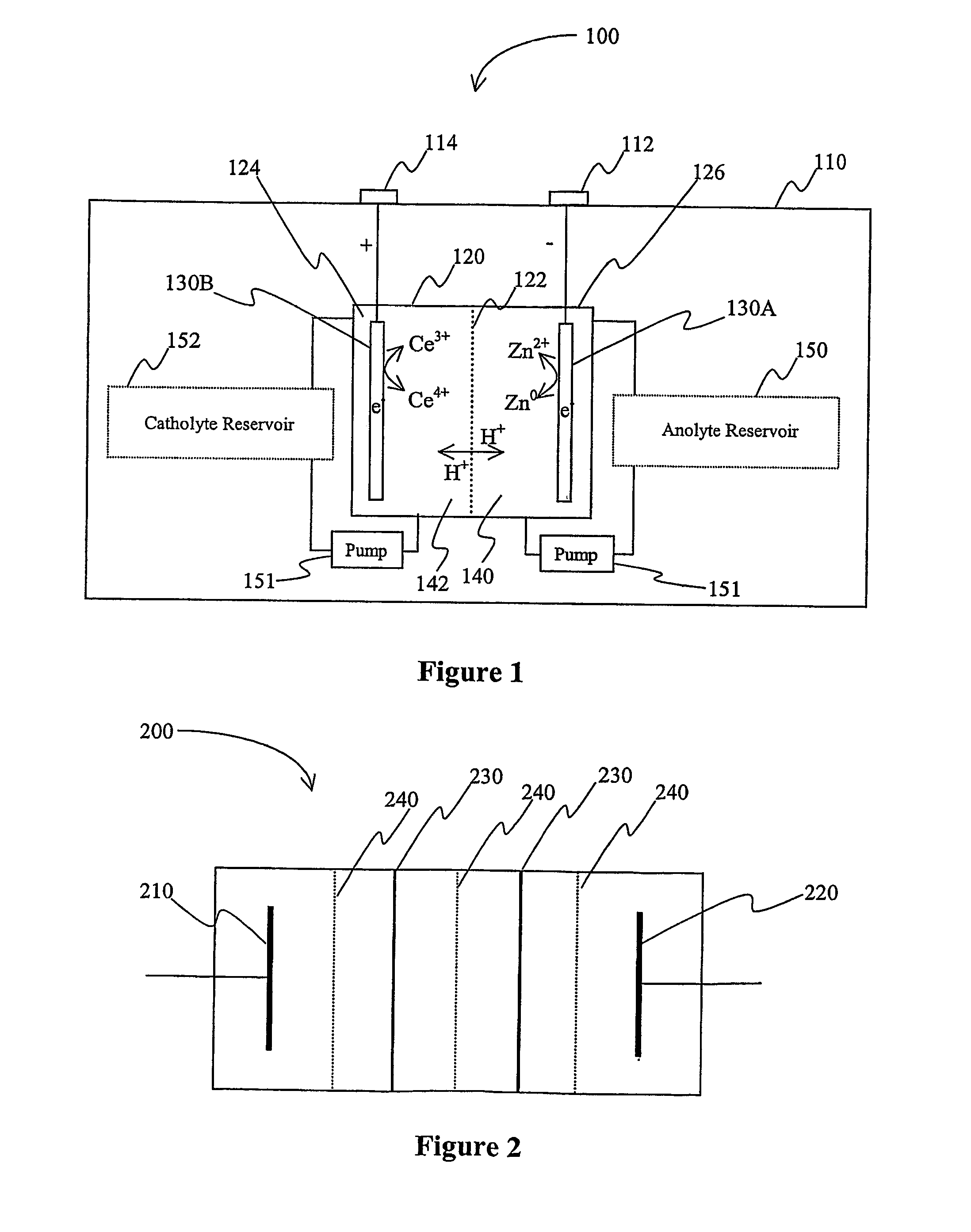Lanthanide batteries
a technology of lanthanide batteries and lanthanide, which is applied in the field of lanthanide batteries, can solve the problems of mercury oxide toxicity, poor power-to-weight ratio of commonly used zn/c batteries, and become even more problematic, and achieves a wide range of capacities and high capacity
- Summary
- Abstract
- Description
- Claims
- Application Information
AI Technical Summary
Benefits of technology
Problems solved by technology
Method used
Image
Examples
Embodiment Construction
[0016]The inventors have discovered that a battery may be produced in which a lanthanide and zinc form a redox pair in the electrolyte. As used herein, the term “redox pair” is interchangeably used with the term “redox couple” and refers to a combination of a first element (or ion of the first element) and second element (or ion of the second element) in a battery, in which reduction of the first element and oxidation of the second element produce the current provided by the battery.
[0017]As further used herein, the term “anode” refers to the negative electrode of a battery (i.e., the electrode where oxidation occurs) during discharge of the battery. Thus, the term “anode compartment” refers to the battery compartment that includes the anode, and the term “anolyte” refers to the electrolyte in the anode compartment. Similarly, the term “cathode” refers to the positive electrode of a battery (i.e., the electrode where reduction occurs) during discharge of the battery. Thus, the term ...
PUM
| Property | Measurement | Unit |
|---|---|---|
| open circuit voltage | aaaaa | aaaaa |
| open circuit voltage | aaaaa | aaaaa |
| open circuit cell voltage | aaaaa | aaaaa |
Abstract
Description
Claims
Application Information
 Login to View More
Login to View More - R&D
- Intellectual Property
- Life Sciences
- Materials
- Tech Scout
- Unparalleled Data Quality
- Higher Quality Content
- 60% Fewer Hallucinations
Browse by: Latest US Patents, China's latest patents, Technical Efficacy Thesaurus, Application Domain, Technology Topic, Popular Technical Reports.
© 2025 PatSnap. All rights reserved.Legal|Privacy policy|Modern Slavery Act Transparency Statement|Sitemap|About US| Contact US: help@patsnap.com


